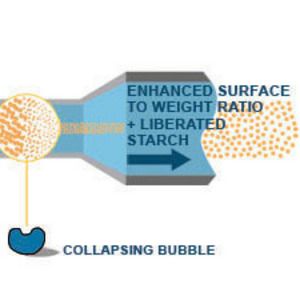Glacial Lakes Energy Installs Arisdyne CFC system

Arisdyne Systems
June 14, 2013
BY Arisdyne Systems
Glacial Lakes Energy recently installed Arisdyne Systems’ patented controlled flow cavitation (CFC) system at its Aberdeen Energy facility in Mina, S.D. Glacial Lakes Energy and Arisdyne collaboratively demonstrated that the CFC System increased daily average ethanol production and performed above the test agreement of 1.5 percent.
“After evaluating several yield increasing technologies, including new enzymes, it made a lot of sense to test Arisdyne’s technology due to the simplicity, small footprint, and lower operating expenses,” said Frank Moore, director of operations for GLE. “Arisdyne’s service model allows higher margins without upfront capital for machinery, and it includes full maintenance of the cavitation device and technology enhancements in a justifiable monthly fee.”
Advertisement
Advertisement
Commenting on the ease of installation, Glacial Lakes Energy’s Production Manager Tim Crabtree said, “It only took two weeks to complete the make ready work and system installation; and only four hours to tie it into our plant’s process. Since startup of the equipment, it just runs.”
Shortly after startup, both teams began to validate the anticipated improvements. “Arisdyne has a very precise and comprehensive test protocol at full commercial scale,” said Validation Engineer Bill Herdt. “Full-scale testing provides a higher confidence level for most customers than mere slipstream testing.”
The yield enhancement principal and design of applying cavitation to slurry materials in order to liberate recalcitrant starch is well established. Arisdyne’s patented CFC devices and processes apply this high shear technology, in line, to open the corn cell structure efficiently, expose the starches to water and enzymatic activity more aggressively, and reduce particle size — all contributing to lower viscosity and more complete front-end processing. Other approaches offer options for finer grinding, more intense heat and steam treatments, or more aggressive enzymes to liberate/convert more starch to sugars, but at higher processing costs, greater energy consumption, or capital investments requiring space and maintenance.
Advertisement
Advertisement
The ethanol industry is constantly tasked to find new methods and technology to improve the economics of corn and other grain based ethanol. “Arisdyne offers a proven technology. The combined capacity of ethanol producers using Arisdyne’s CFC technology is approaching 500 million gallons per year," remarked Fred Clarke, executive vice president of Arisdyne. “Translating into nearly 15 million additional gallons per year to the ethanol industry. It’s just another example of how Arisdyne helps the ethanol industry to improve margins.”
Related Stories
CoBank’s latest quarterly research report, released July 10, highlights current uncertainty around the implementation of three biofuel policies, RFS RVOs, small refinery exemptions (SREs) and the 45Z clean fuels production tax credit.
The U.S. Energy Information Administration maintained its forecast for 2025 and 2026 biodiesel, renewable diesel and sustainable aviation fuel (SAF) production in its latest Short-Term Energy Outlook, released July 8.
XCF Global Inc. on July 10 shared its strategic plan to invest close to $1 billion in developing a network of SAF production facilities, expanding its U.S. footprint, and advancing its international growth strategy.
U.S. fuel ethanol capacity fell slightly in April, while biodiesel and renewable diesel capacity held steady, according to data released by the U.S. EIA on June 30. Feedstock consumption was down when compared to the previous month.
XCF Global Inc. on July 8 provided a production update on its flagship New Rise Reno facility, underscoring that the plant has successfully produced SAF, renewable diesel, and renewable naphtha during its initial ramp-up.
Upcoming Events










